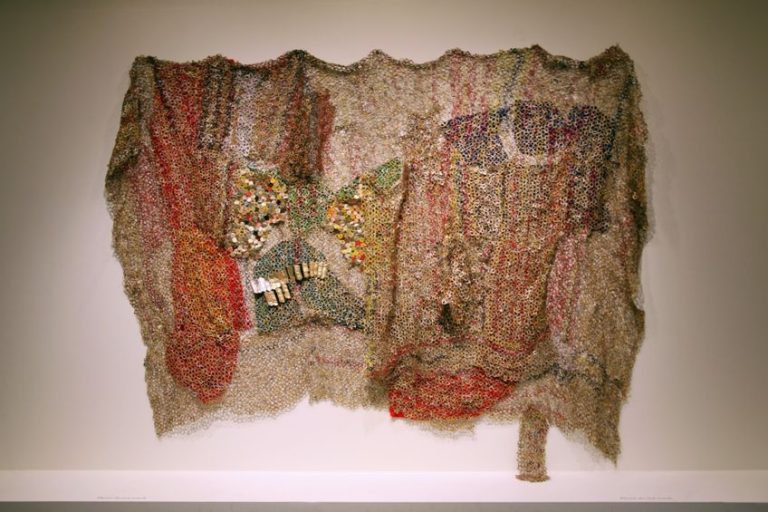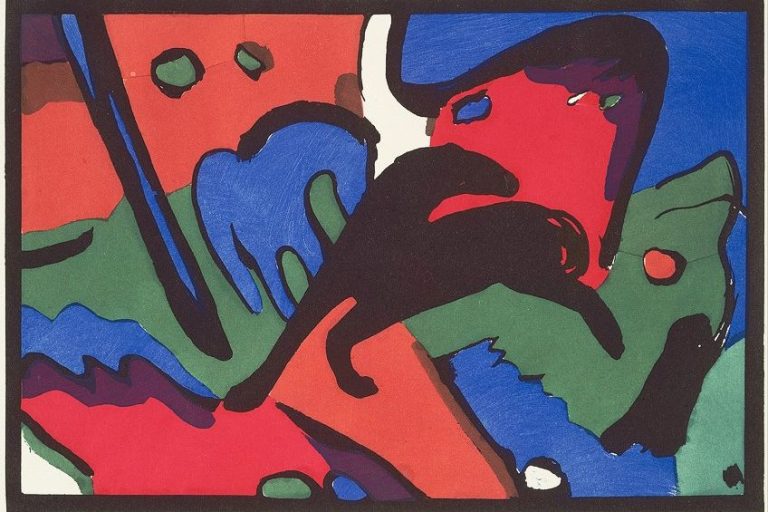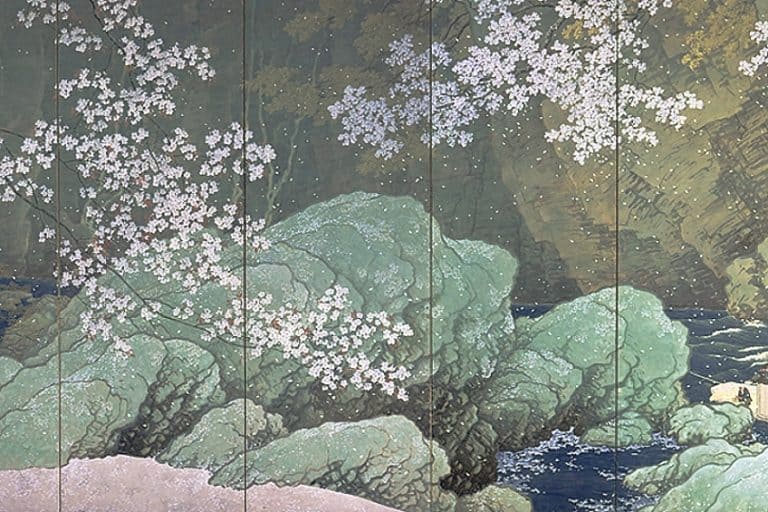Diptych Art – A Look at the History and Style of Diptych Artwork
Artists have favored using diptychs throughout history. But what is a diptych? Diptych artwork refers to a piece of art that comprises of two corresponding panels joined together, but it can also be a singular piece made up of two panels that depict separate scenes, or one piece that continues over both panels. Over the years, countless brilliant diptych artworks have been produced. In this article, we will be exploring diptych art, its history, its evolution, and more! Keep reading to reveal our selection of the five most famous diptych paintings in the world.
What Is a Diptych?
Here is the diptych definition, put simply a diptych is an object that is made up of two parts, a singular piece of artwork formed by a pair of panels joined together. Diptych artwork can feature paintings, photographs, drawings, carvings, or any flat piece of artwork. The formation can be portrait or landscape and it is common for both pieces to be the same size. The panels that form diptych artwork can be fixed together by a hinge or they can be adjoining pieces. Adding another panel would transform the diptych into a triptych.
Diptychs come in a variety of styles. The two panels often depict scenes that are closely related to each other or demonstrate different perspectives of the same scene.
It is also common for the panels to share composition or color but depict different scenes in each panel. An example of this would be a diptych containing the portraits of a married couple, where each partner was depicted in a separate panel, but the same color palette and technique were used in each panel to provide cohesion.
The History of Diptych Art
If we break down the diptych definition, we find that it is derived from the Greek words di meaning “two” and ptychē meaning “fold.” Its original title gives us an indication of its original function. Diptychs were used as writing tablets that could fold; we can almost think of the diptych as an ancient version of the standard notebook. Where a diptych was made up of a pair of plates that were hinged together and filled with wax that could be inscribed, a stylus was then used to scratch the surface of the wax to write on it.
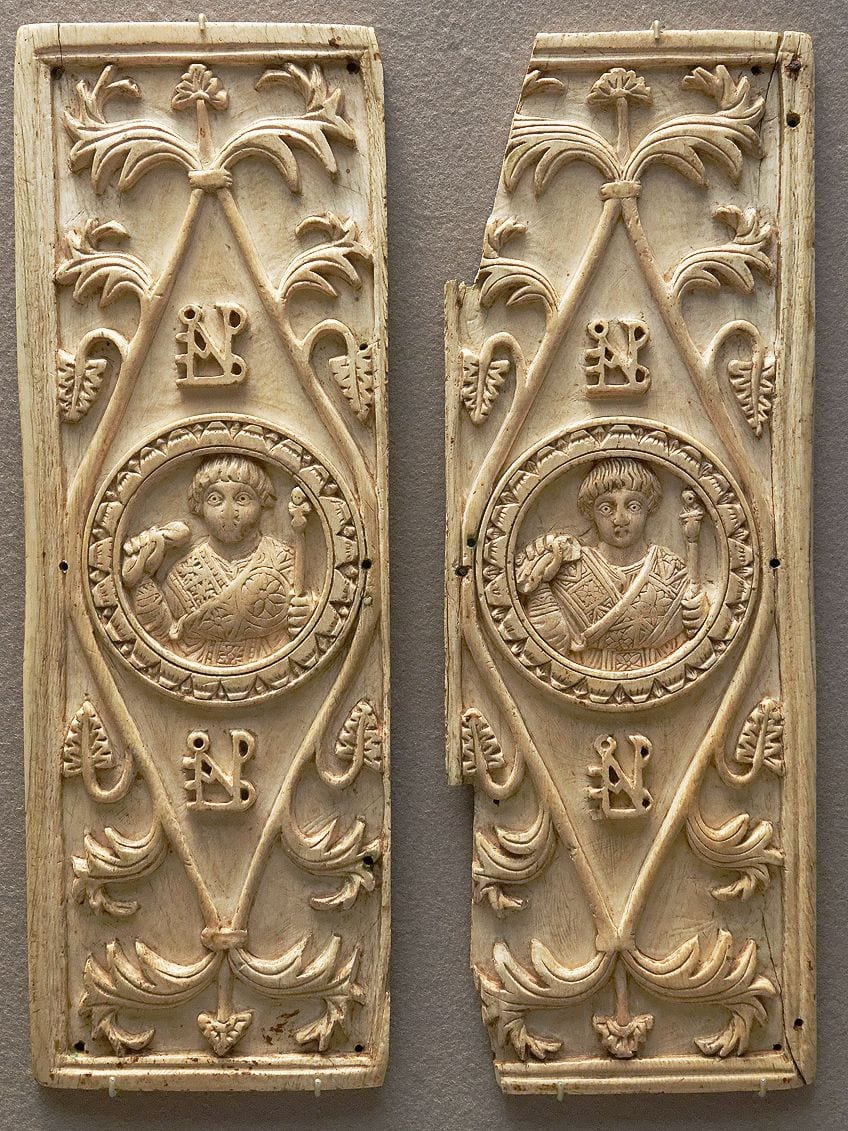
Then, as if by magic, heating the wax slightly would smooth it over and it would be good as new, erasing all previous etchings. The plates were often made from wood, but versions made from metal or bone could also be found. There were luxurious versions, crafted with extravagant materials and standard diptychs with wooden frames.
Diptychs were a favored art form of Medieval paintings, which continued into the Renaissance period. They were commonly hinged together as a means of protecting the artwork encased within. Diptychs could be used as sacred artworks for Christian art, and they were sometimes made into altarpieces. However, the triptych was a more popular choice for altarpieces. During the Byzantine era, diptychs frequently took their place as traveling icons for private religious purposes.
Diptychs were widespread in Italy by the 13th century and regularly featured in Italian Renaissance artworks. Then from around 1400 to 1580 in Flanders, we see an influx of diptychs in Northern Renaissance religious paintings, which became popular with prominent Flemish artists such as Jan van Eyck. These pieces typically featured scenes from the Bible, secular portraits, and depictions of the Holy Trinity. The format of these diptychs characteristically included a depiction of the Madonna and Child on the right panel and a portrait of the diptych’s owner in prayer beside their portrait saint on the left panel.
Evolution of Diptych Art
Traditionally, diptychs were hinged together in a manner that permitted folding for the sake of protecting the artwork. The diptych then evolved into a piece of artwork that was commonly used to depict religious subjects or scenes in later centuries.
Diptychs were also used to honor important figures and saints. Their functional hinges made them into altarpieces that were portable, while still preventing any damage to the artwork within.

According to the British Museum, these diptychs were categorized as ritual and religious equipment. These incredible pieces spanned centuries and were featured in cultures across the world, including the Christian and Buddhist faiths. A large number of these pieces were carved in stone or ivory.
In contrast, in Modern art, we see a lot more structural variation.
Artists frequently created two unrelated panels that were designed to hang beside one another but were not physically connected. It was also common for artists to use a single panel to create an illusion of a diptych. This could be achieved by painting a line in the artwork to divide it or cutting two windows into a single mat.
Why Use Diptychs?
The various uses for diptychs range from more functional ones such as an ancient notebook of sorts, or a means for protecting art, to intricate altarpieces made for devotional use, to artworks that tell a story of a scene, to intricate pieces that demonstrate contrast.
Diptychs have remained popular for centuries among artists. In diptych artwork, the two panels could be used to form a single scene.

A diptych could also be an example of artwork consisting of two matching parts. Another interpretation of diptych artwork involves using two separate panels as standalone artworks that are then connected through aesthetic coherence.
Artists can use each panel to highlight contrasting concepts, depicting things such as life and death or contrasting emotions. The diptych served different purposes; it was not just an intricate piece of artwork.
A diptych could contain a list of names of those who were alive on one side and a list of those who were dead on the other side, for prayers and Masses. Diptychs could also serve as devotional pieces in the Christian church for worship, showing a series of related scenes on the two hinged panels. These were often depictions of the life of the Virgin Mary and Jesus Christ.
Five of the Most Famous Diptych Paintings
A large collection of magnificent diptychs exists in both Classical art and Modern art. Ancient pieces that have survived are rare and held in the collections of some of the world’s most famous museums. Here is our selection of the five most famous diptych paintings throughout the history of art.
The Wilton Diptych (c. 1395 – 1399) by Unknown
| Artist | Unknown |
| Date Painted | c. 1395 – 1399 |
| Medium | Tempera on panel |
| Dimensions | 53 cm x 37 cm |
| Where It Is Currently Housed | National Gallery, London, England |
The Wilton Diptych forms part of the remains of King Richard II’s collection of artworks. The Wilton Diptych is an exquisite example of religious panel painting from the late Medieval period in England. It is one of the few panel paintings from England to have survived. The painting was commissioned for King Richard II in the last five years of his life.
This famous diptych painting is a combination of secular and religious imagery to represent the conception of Richard II’s kingship.

The Wilton Diptych is a small Gothic-style panel painting made from oak and it served as King Richard II’s portable altarpiece. The devotional artwork was indicative of King Richard II’s Christian devotion and his credence in his divine right. King Richard II is depicted kneeling before the heavenly scene on the panel on the left, along with John the Baptist and patron saints Edmund and Edward the Confessor, who present him to the Virgin Mary and Christ Child, which are found on the right panel surrounded by eleven angels.
Symbolism was abundant in this famous diptych painting. The number eleven represents the age Richard II became King.
Richard II’s emblem of the white hart is worn as a badge by the King and the angels. The Christ Child raised his hand to bestow blessings onto the standard and Richard II’s rule over England. Lavish colors of ultramarine blue and gold decorate the painting. The Wilton Diptych demonstrates intricate detailing, rich paintwork, and meticulous gilding. It is a rare triumph.
Diptych of Federico da Montefeltro and Battista Sforza (c. 1473 – 1475) by Piero della Francesca
| Artist | Piero della Francesca |
| Date Painted | c. 1473 – 1475 |
| Medium | Oil on wood |
| Dimensions | 47 cm x 33 cm |
| Where It Is Currently Housed | Uffizi Gallery, Florence, Italy |
Diptych of Federico da Montefeltro and Battista Sforza is one of the most revered Italian Renaissance portraits. The portraits feature husband and wife, Battista Sforza and Federico da Montefeltro. Piero della Francesca exercises the traditions of the 14th century with his inspiring diptych, which took influence from ancient coin designs with his depiction of the two figures shown in profile.
This angle allowed Francesca to portray the figures with enough detail for faithful representation and a good likeness, without the need for depicting their sentiments.
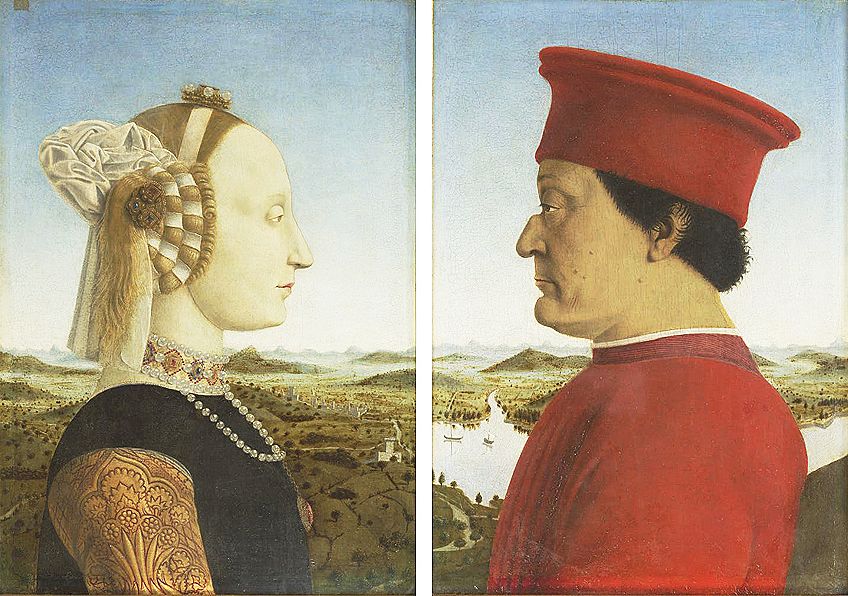
The Duke and Duchess face each other and Francesca’s portrayal of the spatial components such as the continuity of the landscape and the lighting represent the area over which they ruled. Although the striking contrast between Battista Sforza’s pale complexion and Federico’s bronze hue was aligned with the aesthetic conventions of the Renaissance, they also alluded to Sforza’s untimely passing in 1472. The back of the panels features the couple being triumphantly carried by ancient wagons with Latin inscriptions below that detail Christian virtues.
The portraits now exist with a modern frame, but the paintings on the back suggest that they were once part of a diptych.
The unique paintings on the reverse side and their iconography were representatives of the Roman triumph, which traditionally commemorated military victories but in this context, when paired with the inscriptions, they were allegories of eternity, chastity, love, fame, and time. Diptych of Federico da Montefeltro and Battista Sforza is Francesca’s masterpiece.
The Sculptor Aubé and His Son, Emile (1882) by Paul Gauguin
| Artist | Paul Gauguin |
| Date Painted | 1882 |
| Medium | Oil on canvas |
| Dimensions | 53 cm x 72 cm |
| Where It Is Currently Housed | Petit Palais, Paris, France |
The Sculptor Aubé and His Son, Emile was painted by the influential French artist Paul Gauguin. Gauguin was trained in Impressionism, but he shifted from it developing a new style called Symbolism. Gauguin’s diptych differed from his usual work, as its color palette was not as vibrant and the scene he depicted was not as exotic. The right panel features Jean-Paul as he undertakes the vase-making process in his workshop, but rather than paying attention to the task at hand he looks at his son, who is depicted reading in the left panel.
The two figures, father and son, are placed on opposing sides and seem to be positioned far away from each other, emphasized by each panel having a completely different atmosphere.
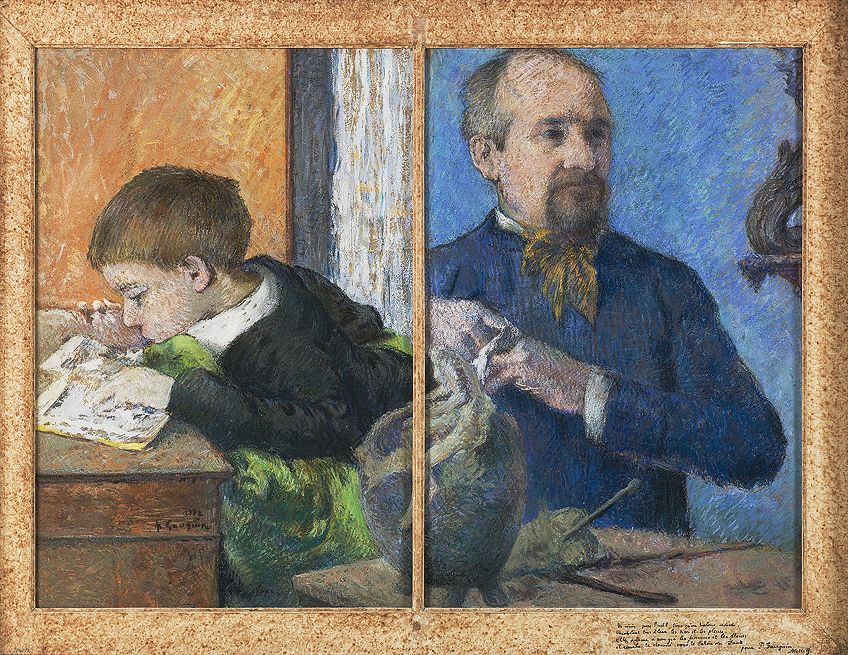
Yet, with Gauguin’s artistry, the two panels flow into each other. The vase makes a further connection between the two scenes. The vase takes up a large portion of the canvas on the right panel where we see the father’s workstation, then we see it appear in the corner of the scene on the left canvas that holds the depiction of his son.
In “The Sculptor Aubé and His Son, Emile” we see Gauguin’s shift from Impressionism and his fixation with imitation.
His post-Impressionism work had a deep impact on Modern and French avant-garde artists, such as Henri Matisse and Pablo Picasso. Sadly, his work remained largely unappreciated until well after his death. Now, Gauguin is largely recognized for his experimentation with color and his Synthetism style that distinguished his work from Impressionism.
Marilyn Diptych (1962) by Andy Warhol
| Artist | Andy Warhol |
| Date Painted | 1962 |
| Medium | Silkscreen ink and acrylic paint on two canvases |
| Dimensions | 205.44 cm x 289.56 cm |
| Where It Is Currently Housed | Tate, London, England |
The monumental Marilyn Diptych is one of Andy Warhol’s most renowned artworks of the movie star Marilyn Monroe. Marilyn Diptych comprises 50 images, the photograph used by the pop artist was a publicity shot of Marilyn from the film Niagara (1953). Warhol used this photograph of Marilyn as the basis of many of his prints and paintings of the famed actress. Warhol finalized his spectacular artwork just a few weeks after Marilyn’s death in 1962.
Warhol used the silk-screening technique to create the “Marilyn Diptych”. On the left side of the famous diptych painting, there are 25 images painted in color, while the right side of the painting consists of the same images in black and white.
There are several ways one can interpret the painting, one such suggestion is the contrast of vibrant color with black and white, which evokes Marilyn’s life and death. The continuous repetition of Marilyn’s image illustrates her ubiquitous influence. The painting integrates two of Warhol’s most prominent concepts: death and the cult of celebrity.
Marilyn Diptych has been praised for encapsulating Marilyn’s legacy. The striking contrast between either side of the painting and the multiplicity of meanings it elicits demonstrate the power of the diptych. The painting was third on a list, curated by The Guardian in a 2004 article, of influential Modern artworks.
“Marilyn Diptych” is widely recognized as Warhol’s most famous painting.
Vertical Flanking Diptych (Large, Red Line) (1966 – 1968) by Jo Baer
| Artist | Jo Baer |
| Date Painted | 1966 – 1968 |
| Medium | Oil on canvas |
| Dimensions | 152.3 cm x 109.2 cm |
| Where It Is Currently Housed | National Gallery of Australia, Canberra, Australia |
When Baer began painting, her work fell in line with the Abstract Expressionism movement that was taking over New York in the 1950s. Her style largely shifted when she left for Los Angeles where spent several years working. Upon returning to New York, she began to favor the style of Abstraction, which prioritized harsh edges and the emptiness of her canvas. Baer’s precisely crafted canvases from the 1960s are among her most recognizable, such as her Vertical Flanking Diptych (Large, Red Line).
“Vertical Flanking Diptych (Large, Red Line)” largely consists of a consuming blank space framed by a strip of red around the perimeter, surrounded by a thicker black band. It was important to note that the black band was not the frame, nor was the white space the center.

The painting is shown as a duplicate diptych, with two identical canvases to emphasize their physicality. Baer’s minimalist work draws attention to the spatial relationships on the canvas– the positive and negative space and absence and presence on the canvas were more important than subject matter.
Baer’s inspired artworks were widely recognized by her Minimalist contemporaries. Her artwork was included in various exhibitions, such as Dan Graham’s New York exhibition that included influential artists such as Robert Smithson and Sol Le Witt. In 1975, the Whitney cast a spotlight on Baer’s Minimalist work, however, she was already resisting the categorization of her work from the 1960s. Although Baer was a pioneering figure among the protagonists of Minimalism, in 1975 she left New York for Ireland, leaving Minimalism behind.
Diptychs have been around for centuries as a staple artistic choice for the Classical arts, and they have remained relevant and popular enough to be incorporated into Modern art. Diptychs have evolved from ornamented writing tablets strung or hinged together to spectacular paired paintings connected by the same means. Our selection of the five most famous diptych artworks demonstrates the intricacy and variations of this art form. If you enjoyed this piece, we think you might enjoy our other articles! Browse through our website to find more amazing art-related content!
Take a look at our diptych art webstory here!
Frequently Asked Questions
What Is a Diptych?
If we break down the diptych definition, we find that it is derived from the Greek words di meaning two and ptychē meaning fold. Its original title gives us an indication of its original function. Diptychs were used as writing tablets that could fold; we can almost think of the diptych as an ancient version of the standard notebook. A diptych is an object that is made up of two parts, a singular piece of artwork formed by a pair of panels joined together. Diptych artwork can feature paintings, photographs, drawings, carvings, or any flat piece of artwork. The formation can be portrait or landscape and it is common for both pieces to be the same size. The panels that form diptych artwork can be fixed together or could be adjoining pieces.
What Is the Purpose of a Diptych?
The various uses for diptychs range from more functional ones such as an ancient notebook of sorts, or a means for protecting art, to intricate altarpieces made for devotional use, to artworks that tell a story of a scene, to intricate pieces that demonstrate contrast. Diptychs have remained popular for centuries among artists. In diptych artwork, the two panels could be used to form a single scene. A diptych could also be an example of artwork consisting of two matching parts. Another interpretation of diptych artwork involves using two separate panels as standalone artworks that are then connected through aesthetic coherence. Artists can use each panel to highlight contrasting concepts, depicting things such as life and death or contrasting emotions. The diptych served different purposes; it was not just an intricate piece of artwork. A diptych could contain a list of names of those who were alive on one side and a list of those who were dead on the other side, for prayers and Masses. Diptychs could also serve as devotional pieces in the Christian church for worship, showing a series of related scenes on the two hinged panels. These were often depictions of the life of the Virgin Mary and Jesus Christ.
What Is the Evolution of the Diptych?
Traditionally, diptychs were hinged together in a manner that permitted folding for the sake of protecting the artwork. The diptych then evolved into a piece of artwork that was commonly used to depict religious subjects or scenes in later centuries. Diptychs were also used to honor important figures and saints. Their functional hinges made them into altarpieces that were portable, while still preventing any damage to the artwork within. In contrast, in Modern art, we see a lot more structural variation. Artists frequently created two unrelated panels that were designed to hang beside one another but were not physically connected. It was also common for artists to use a single panel to create an illusion of a diptych. This could be achieved by painting a line in the artwork to divide it or cutting two windows into a single mat.
Isabella studied at the University of Cape Town in South Africa and graduated with a Bachelor of Arts majoring in English Literature & Language and Psychology. Throughout her undergraduate years, she took Art History as an additional subject and absolutely loved it. Building on from her art history knowledge that began in high school, art has always been a particular area of fascination for her. From learning about artworks previously unknown to her, or sharpening her existing understanding of specific works, the ability to continue learning within this interesting sphere excites her greatly.
Her focal points of interest in art history encompass profiling specific artists and art movements, as it is these areas where she is able to really dig deep into the rich narrative of the art world. Additionally, she particularly enjoys exploring the different artistic styles of the 20th century, as well as the important impact that female artists have had on the development of art history.
Learn more about Isabella Meyer and the Art in Context Team.
Cite this Article
Isabella, Meyer, “Diptych Art – A Look at the History and Style of Diptych Artwork.” Art in Context. March 18, 2022. URL: https://artincontext.org/diptych-art/
Meyer, I. (2022, 18 March). Diptych Art – A Look at the History and Style of Diptych Artwork. Art in Context. https://artincontext.org/diptych-art/
Meyer, Isabella. “Diptych Art – A Look at the History and Style of Diptych Artwork.” Art in Context, March 18, 2022. https://artincontext.org/diptych-art/.




